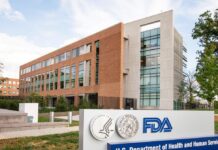It’s not the first time Slavitt has advised the federal government in a critical moment. Back in 2013, he helped fix Healthcare.gov after its initial floundering rollout — and later joined the Centers for Medicare and Medicaid Services, which he led as acting administrator during the final two years of the Obama administration.
Slavitt spoke with us late last week about the coronavirus response and his new role. Here’s our interview, lightly edited for clarity and brevity.
H202: States and localities have cited communication problems as a reason for the initial slow ramp-up of vaccinations. What is the Biden administration doing to help fix that?
Slavitt: Well, I think what we inherited was — think of it this way — distributing one product with 57 distribution strategies all decided by different regions and territories in the country and everyone is doing it a bit differently. While obviously local decisions will be critical to getting this to the right people, there are breakdowns that we have to find that are occurring as the vaccine gets the last mile.
First thing we did to combat that was provide clarity as to how much vaccine people were going to be receiving, and to keep increasing that number. Our hope is that the jurisdictions where we are sending the vaccines will do the same to their counterparts down the road, so there can be as high predictability as possible and appointments don’t need to be canceled.
H202: Administration of the shots still seems to be lagging — a little less than half of all vaccines distributed have yet to be given as shots, according to The Post’s tracker. What’s being done to speed things up?
Slavitt: When we got here, it was 46 percent administration rate. There have been some improvements to get up to 60 percent. … More deliveries go out the beginning of the week and then more distribution gets reported toward the end of the week. That means it bounces around but it’s still within the zone.
I would love to see us get to a point where large majorities of the vaccine were getting to states and into arms within seven to eight days and that providers were comfortable only keeping the doses that are targeted to be second doses and not stockpiling first doses. When there are shortages, people hoard. We have to break up that hoarding by communicating with people really well and delivering on expectations.
There are a bunch of big things — and probably a long list of small things — that can be done to improve this. Obviously our launch of the pharmacy effort and the standing up of the FEMA sites are a way to begin to get much more direct opportunities to get vaccines to people much more directly and quickly.
H202: Administration officials claimed they were starting from square one on the distribution effort. But is that a fair characterization given the country was also to Biden’s goal of 1 million shots a day by the time he became president?
Slavitt: I think the prior administration should be applauded and thanked for everything they did to get the vaccination process moving. We view our jobs as through the last mile — getting the needle into arms, not in just sending vaccines out to states. There’s a reason why the numbers — 40 million by the end of the year, 100 million by January — there’s a reason why those numbers weren’t happening. We needed to put in place an end-to-end system, and we’re still trying to do it.
I don’t want to fixate on this as a conversation about what people in the past did or didn’t do. I will set the expectation, though, that unlike what we had heard, we came in and there was no stockpile of inventory. We had been hearing for a year there was a massive amount of production that was taking place that would instantly allow us to vaccinate people and I think the American people were left with that impression. We’ve had to clarify that’s not the case, unfortunately. It will take longer to vaccinate people than we were led to believe. Our approach has been, and will continue to be, to level with people and tell them the actual facts.
H202: Are there any more announcements around vaccine distribution or public health recommendations we should be watching for in the coming days?
Slavitt: We do these Monday, Wednesday, Friday briefings to keep people current. That is the idea — that we on a regular basis are communicating as much as we know when it’s ready. One thing you probably won’t see is us talk about a lot of things that are in process.
H202: Of the 100 new vaccination sites Biden has pledged by the end of his first month in office, how many have opened so far and where are they?
Slavitt: I think we are going to release that news on a pretty regular basis. But I do get a nightly report from FEMA on all their progress and I think they hopped on this really quickly. I’m impressed, at least based on what I’ve been reading every night from them.
H202: Can you at least give a ballpark estimate?
Slavitt: I can’t, and part of the reason is because I don’t want to do this piecemeal. I worry that these numbers need to be presented clearly and cleanly. The previous administration threw out big numbers of things that were happening, and then when you get behind it, say, “What does it mean to open, are they open, are they vaccinating people, are people stood up?” I want to make sure we get these definitions right.
H202: The phrase “follow the science” has been thrown about a lot — but have we actually followed the science on schools? One-third of kids still have access to only virtual learning despite mounting evidence schools aren’t big spreaders.
Slavitt: I think you’re going to find the [Centers for Disease Control] clarifying the policies. You’re already seeing hints of it based on the president’s commitment and some of the things you’ve heard [CDC Director] Rochelle Walensky say already about how it is possible to open up schools safely.
I would say follow the science for us means let the CDC do its job, let the [Food and Drug Administration] do its job, let the [National Institutes of Health] do its job. Manage the strategy around that, as opposed to political people at the White House telling the FDA what they’re supposed to do or telling the CDC what they’re supposed to do. Doesn’t mean that we won’t have discussions with the CDC. But it means that the CDC looks at the data without any interference and I think in the case of schools you’re starting to see that.
H202: The administration has committed to working with community groups to counter vaccine hesitancy. Are there some specific groups that have begun doing this work?
Slavitt: I don’t know specifically about community groups, but what I do know is there is a big addition we will be talking about over the course of the next few weeks about vaccine hesitancy. I can’t give you more details yet but hopefully soon.
H202: I know you’re trying to ensure vaccines get to communities of color. How’s that going?
Slavitt: We are selecting communities for distribution that are in neighborhoods where it’s more convenient for people to go, where there are free transportation, programs to get people there.
What we’re combating is a little bit of what I would call vaccine gentrification, where you have people from the suburbs who drive into these neighborhoods and get in line ahead of people and get these vaccines. We have to just continue to be smart about this because there are people that are most at risk of hospitalization and death and they are getting the least amount of vaccines.”
H202: Data so far suggest White Americans are getting the vaccines are higher rates than Blacks of Hispanics. But does that disparity make sense, at least for now, given the elderly population is disproportionately White?
Slavitt: It is true in the 80-plus population that sadly the life expectancy is lower for people of color. But even with that, it’s still true we are not getting vaccines equitably to communities of color. You’re right, the data isn’t giving us a clear picture, but if you wait to say what is a perfectly clear picture and ignore what data we do know, then I think you’re making a mistake.
H202: The administration is starting to send vaccines directly to pharmacies. But what about areas of the country with so-called “pharmacy deserts?”
Slavitt: Great point. If you just use traditional methods, you will exacerbate the equity problem. So that is why we have to use mobile sites, we have to use federally qualified health centers, we have to make sure the vaccinations reach churches and places where people already go.
H202: Under the Trump administration your role in the pandemic was as a private citizen and outsider. What’s it like to now be helping lead a response you have spent the last year critiquing?
Slavitt: It feels good to be doing the work. I’d much rather be helping. I will only be doing this for about four and a half months but that’s an important period of time.
H202: Any chance you stay on past the several months you’ve agreed to?
Slavitt: Ron Klain came into the Ebola crisis for a similar period of time. There’s a critical period at the beginning where we have to get things set up and running, where I can be most effective.
Ahh, oof and ouch
AHH: Biden says his administration will turn National Football League stadiums into mass vaccination clinics.
“In his first network television interview since taking office, President Biden acknowledged it will be ‘very difficult’ for the United States to reach herd immunity at the current rate coronavirus vaccines are being administered in the country and that his administration would utilize all 32 National Football League stadiums as mass vaccination centers to help in the effort,” The Post’s Amy B Wang and Anne Gearan report.
Biden called the Trump administration’s handling “even more dire than we thought,” in an interview with “CBS Evening News with Norah O’Donnell.” The president said that he had expected a larger supply of vaccine doses would be available when he took office.
The Biden administration on Friday approved a FEMA request to deploy 1,100 troops to support vaccination sites, and also said it would leverage the Defense Production Act, to ensure Pfizer has access to equipment to scale up production of its vaccine.
Biden also pushed for schools to reopen in the interview, saying children are paying a price.
“I think it’s time for schools to reopen safely. Safely,” Biden said. “You have to have fewer people in the classroom. You have to have ventilation systems that have been reworked. Our CDC commissioner is going to be coming out with science-based judgment, within I think as early as Wednesday to lay out what the minimum requirements are.”
OOF: The U.K. coronavirus variant is spreading rapidly in the United States.
The coronavirus variant that shut down much of the United Kingdom is outcompeting other strains and doubling its prevalence among confirmed infections every week and a half, according to a report published on the preprint server MedRxiv. The study has not yet been peer reviewed, but it supports a forecast from the Centers for Disease Control and Prevention that showed the variant becoming the dominant strain in the United States by late March, The Post’s Joel Achenbach reports.
“The spread of the variant, officially known as B.1.1.7, and the threat of other mutant strains of the virus, have added urgency to the effort to vaccinate as many people as possible as quickly as possible. The variant is more contagious than earlier forms of the coronavirus and may also be more lethal, although that is far less certain,” Joel reports.
Florida leads the country in the highest number of reported cases of the U.K. variant, with 187 as of Thursday.
And scientists are also worried about other variants, including B. 1.351, first seen in South Africa. Preliminary evidence of a clinical trial in South Africa of Novavax’s vaccine found that people with prior coronavirus infections who were given a placebo, were becoming reinfected with B. 1.351, suggesting that natural immunity may offer limited protection against the variant. South Africa also suspended the use of a coronavirus vaccine developed by Oxford University and AstraZeneca after researchers found that it provided minimal protection against mild and moderate infections of that variant.
OUCH: The Supreme Court ruled against California’s coronavirus restrictions on religious services.
“The Supreme Court’s order late Friday night that California must allow churches to resume indoor worship services reveals a conservative majority that’s determined to guard religious rights and is more than willing to second-guess state health officials, even during a pandemic,” The Post’s Robert Barnes reports.
“Under restrictions imposed by California Gov. Gavin Newsom (D), almost all of the state was under an order to ban indoor religious services as officials battle the raging coronavirus pandemic. It is the nation’s most severe restriction, and the court said in an unsigned opinion that it violates the Constitution,” Robert writes.
The court instead said the state must allow indoor services up to 25 percent capacity, although it is still allowed to ban singing and chanting at services, actions public health officials say are particularly likely to spread the virus.
Justice Neil M. Gorsuch, writing for himself and Justices Clarence Thomas and Samuel A. Alito Jr., accused California of “playing favorites” during the pandemic. “If Hollywood may host a studio audience or film a singing competition while not a single soul may enter California’s churches, synagogues, and mosques, something has gone seriously awry,” Gorsuch wrote.
Justice Elena Kagan responded in a sharply worded dissent — joined by Justices Stephen G. Breyer and Sonia Sotomayor — in which she accused the majority of practicing “armchair epidemiology” and endangering lives.
More in coronavirus
States are redistributing hundreds of thousands of vaccine doses that went unused by nursing homes.
When the vaccine rollout began last month, every state except West Virginia opted into a program to have CVS and Walgreens inoculate residents and staff at long-term care facilities. But the doses sent directly to the pharmacy chains were allocated by the number of beds, not the actual number of residents.
Meanwhile additional factors contributed to an excess provision of doses: “Workers in long-term-care homes also turned out to be far less willing than expected to be vaccinated, adding to the surplus. Still more became available when people administering the vaccine found they could get six doses out of each vial of Pfizer’s product, rather than five,” The Post’s Lena H. Sun and Lenny Bernstein report.
Now the Centers for Disease Control and Prevention is working with 32 jurisdictions to redistribute excess doses, a move with the potential to quickly expand vaccinations to more people. Officials declined to say exactly how many doses would be redirected, and some jurisdictions may leave excess doses with pharmacies to vaccinate other priority groups.
West Virginia was the only state that did not participate in the federal partnership, and it has had notable success in distributing the vaccine through a network of local pharmacies. The state has also seen a much higher uptake of the vaccine from nursing home staff.
Meanwhile, there are promising signs on increasing vaccine production.
Pfizer told USA Today it expects to cut the production time to produce a batch of vaccine doses from 110 days to an average of 60, as the company becomes more efficient and builds out production.
Former FDA commissioner Scott Gottlieb said the U.S. could quickly get to a point where supply outstrips demand, in part due to vaccine hesitancy:
Elsewhere in health care
Paid family leave and sick leave could expand for the first time in decades.
“Just two weeks into Bill Clinton’s nascent presidency, the 1993 Family Medical Leave Act was the first bill he signed into law. Advocates said the FMLA, which guarantees certain employees up to 12 weeks of unpaid time off for family or medical reasons, would be a springboard to expansive leave protections. Instead, it proved to be a stopping point: More than 28 years later, Congress hasn’t passed significant legislation to broadly expand family and medical leave,” The Post’s Kim Bellware reports.
But the pandemic has spurred advocates to push for an expansion of the FMLA. On Friday, Rep. Rosa L. DeLauro (D-Conn.) and Sen. Kirsten Gillibrand (D-N.Y.) reintroduced the Family and Medical Insurance Leave (FAMILY) Act, which would grant workers 12 weeks of paid leave to recover from an illness or childbirth or provide care for a family member.
Gilibrand has introduced the bill every congressional session since 2013. But bipartisan support for family leave has grown since the pandemic began. Gilibrand, De Lauro and other Democrats have proposed paying for the leave through taxes, while Republicans support a model that would allow workers to borrow against their Social Security savings.
Treasury Secretary Janet Yellen also indicated on Sunday that Biden is open to including a national mandate for paid family leave and child care in a massive infrastructure and jobs bill that is expected to follow the $1.9 trillion relief bill now being considered in Congress.








